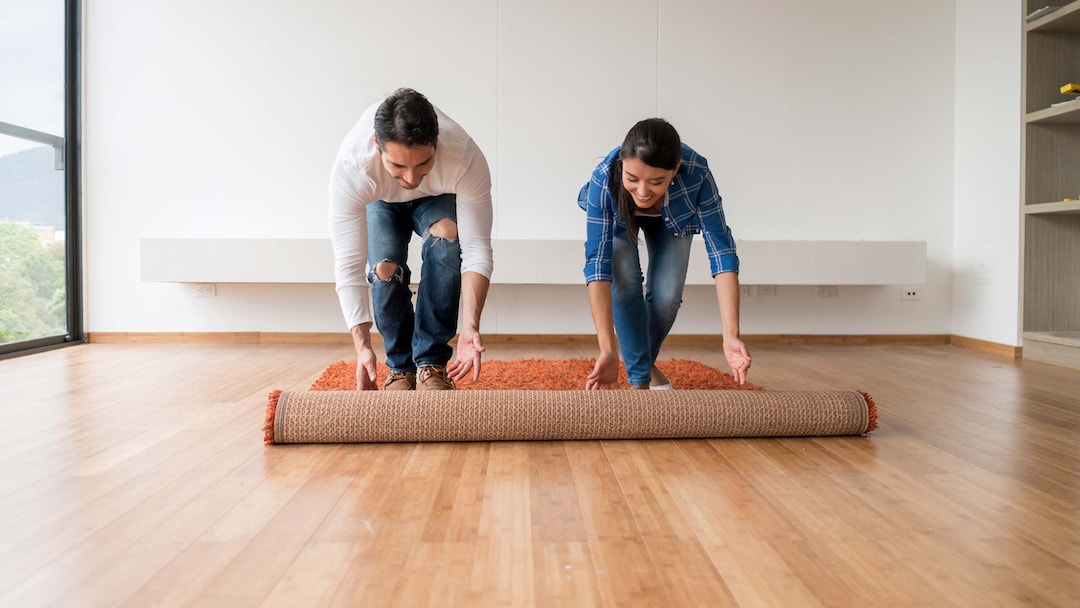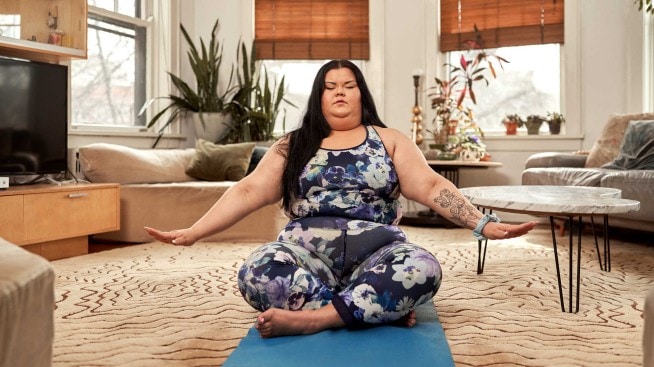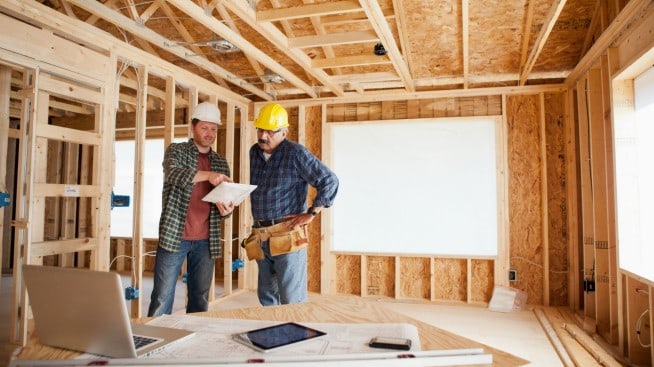Your guide to wood flooring: types, cost & installation

Floors serve an important purpose — they support us when we walk and hold up our beloved furniture. They may even muffle loud sounds from your neighbors. Aside from luxurious materials like marble, few floors tend to match the elegance of wood flooring. Wood brings a certain warmth and refinement to a home, whether it’s a prewar apartment, a grand Victorian, or a new construction. Regardless of the architecture of your home, wood flooring has a classic look that rarely goes out of style.
If you’re buying a home with wood floors or are looking to install wood flooring in a home you already own, there are some considerations to keep in mind. Let’s take a closer look at the pros and cons of wood flooring, the types of wood floors available to choose from and the maintenance you might expect to put into this part of your home.
Hardwood flooring types
There are many different types of wood flooring, each with its own unique qualities. Depending on your budget, the climate you live in and your personal tastes, chances are you’ll find suitable wood flooring that checks at least some of your boxes. Here’s a breakdown of wood flooring options along with key features like durability and pricing:
Solid hardwood flooring
Solid hardwood flooring is perhaps the most timeless type of wood flooring for a reason: It’s incredibly durable — in some cases, it may have a lifespan of over a century. Because each plank is a single, solid piece of wood, it’s possible to sand and refinish hardwood flooring several times over its lifespan. This type of home renovation may breathe new life into floors that have been walked on for decades.
Other features of hardwood flooring
- Wide variety of wood options. Common choices include oak, cherry, maple, hickory, walnut and ash.
- Susceptible to warping if exposed to damp and humid conditions.
- The price of solid hardwood flooring depends on the type of wood that’s used, ranging from around a few dollars per square foot all the way to double digits.
Engineered hardwood flooring
This type of wood flooring is generally a more budget-friendly alternative to solid hardwood flooring. This is because it’s made with multiple layers of wood: a thin top layer of hardwood flooring and multiple layers of plywood or high-density fiberboard, which is usually less expensive.
Other features of engineered hardwood flooring
- Offered in a variety of wood options and finishes.
- Because it’s made with a veneer of hardwood, engineered hardwood flooring uses fewer trees for manufacturing than the solid alternative does, making it a more sustainable wood flooring option.
- While engineered hardwood flooring is more resistant to moisture, it is less durable than solid hardwood flooring and can only be sanded and refinished a couple of times before it needs to be replaced.
Reclaimed wood flooring
Because this type of wood flooring is made with recycled or salvaged wood, it’s an environmentally friendly and sustainable option. Using reclaimed wood instead of new hardwood may also give a home a unique and historic appearance whether you’re installing it in a new construction or an older home.
Other features of reclaimed wood flooring
- The use of reclaimed wood might give your home a fascinating backstory.
- While reclaimed wood can potentially be as durable as its solid hardwood counterparts, it may need a bit more care in the form of refinishing or resealing.
- It may be more difficult to secure enough wood from the same source if you’re looking to complete a large flooring project.
Wood floor alternatives
If you’re interested in wood flooring but have budget restrictions or are concerned about its environmental impact, there are some comparable alternatives you can explore. Cork, bamboo and laminate may provide the look or feel of wood for a lower price point and greater level of sustainability.
Pros and cons of wood floors
As you see, wooden floors are hardly a one-size-fits-all deal. However, they do share some general pros and cons:
Pros of wood flooring
- Aesthetically pleasing: Beyond their elegance and timelessness, the sheer variety of woods and finishes available makes for easy customization. There are cool wood tones, warm wood tones, dark woods, light woods and everything in between.
- Relatively easy to clean: Wood floors are typically easy to clean, especially compared to materials like carpet. They take kindly to sweeping, vacuuming and light mopping with some specially formulated floor cleaner.
- May increase property value: Because wood floors are associated with elegance and durability, homes that sport this feature may be worth more than ones that don’t, and installing wood flooring could increase the value of a property.
Cons of wood flooring
- Maintenance: Despite being easy to clean, wood floors do require some maintenance to extend their lifespan. Resealing, sanding and refinishing your floors may keep them looking fresh and could help them withstand both wear and tear and moisture.
- Susceptible to damage: Wood floors are susceptible to scratches and dents from hard or sharp objects like furniture, heels or even the claws of your pets. Restoring floors to their original state could involve sanding and refinishing, which may require investments of time and money.
- Cost: If you’re looking to invest in wood floors on a budget, consider engineered wood flooring or cork.
How much does it cost to refinish hardwood floors?
The cost of refinishing wood flooring largely depends on the area of the floors being refinished, the type of wood, the finishing being applied and the cost of labor in your area. Refinishing several rooms in an area with high labor costs could run you several thousand dollars, while refinishing a small room in an area with lower labor costs may cost a few hundred dollars instead. Contacting local businesses for a quote may give you a more accurate idea of your project’s pricing.
Wood floor maintenance
Just like the human body, wood floors require a bit of maintenance to ensure their longevity. A little work could go a long way, and what’s a little regular upkeep when it means your floors will look, sound and feel their best for years to come? Here’s a list of ways you can keep your floors looking fresh:
- Sweeping and vacuuming: Regular sweeping and vacuuming helps prevent the buildup of grime and small scratches from abrasive debris. Use a soft bristled broom to prevent scratching and make use of a wood floor attachment if you’re using a vacuum cleaner. Even the most careful vacuuming could result in scratches on your floors.
- Mopping: Mopping your floors with specialized wood floor cleaner may keep your floors looking clean, but make sure you’re judicious with your mop water. Using anything wetter than a damp mop could result in damage to your floors.
- Cover floors with rugs: Rugs may be more than just a décor choice, as they can help protect your wood floors. Consider placing rugs in high-traffic areas in your home or in zones where furniture could cause scratches. As a bonus, rugs also help muffle the sound of footsteps.
- Maintain humidity levels: Wood floors tend not to do well in areas with high humidity, but it’s possible to control the humidity levels in your home thanks to dehumidifying technology.
- Refinish and reseal: Consider refinishing and resealing your floors every 5 – 10 years, depending on the material. Different types of wood flooring have different needs and tolerances when it comes to refinishing, so it may be wise to speak to a professional before taking any action.
In summary
Wood floors have been a desirable flooring option for hundreds of years, and it’s not hard to see why. They boast impressive durability, while bringing a timeless elegance to your home. Depending on the type of wood flooring you have (or choose after buying your home), there are additional perks to appreciate, from sustainability to budget-friendliness. That said, wood flooring doesn’t come without a little effort, as wood requires a little bit of upkeep to maintain its attractive look. That effort, however, could be worth it — besides their potential to last a lifetime, wood flooring may also help increase your home’s value on the market.
Wood flooring FAQs
1. How long do wood floors last?
Depending on the species of wood and the type of flooring, they could last as long as a century or more. If you’re looking for longevity, be aware that you may need to refinish and treat your floors periodically to keep them looking and feeling good. Additionally, they may require a bit more care and maintenance than other flooring materials.
2. Can I complete a hardwood floor installation myself?
Hardwood floor installation should generally be left to the professionals. It may seem cheaper to do this type of work yourself, but you’ll have to pay for more than just wood. The cost of machinery, supplies and specialized tools for sanding, treating, staining and finishing can quickly start to add up. Installing floors is also a physically demanding job that could result in injury if you don’t have experience. Saving your body and getting the job done properly and efficiently may be worth the price of hiring a professional.
3. Is hardwood flooring waterproof?
Hardwood flooring isn’t waterproof, but some types are more water-resistant than others. Engineered hardwood floors tend to withstand spills and humidity better than their solid hardwood counterparts, but still require some humidity management and quick action when it comes to wet messes. If you live in a flood-prone area, hardwood flooring may not be the best option for you.
4. What is reclaimed wood flooring?
Reclaimed wood flooring is made with salvaged or recycled wood. This practice is considered more sustainable, as it uses trees that have already been felled. As a bonus, reclaimed wood often has a unique aged look that could add character — and a cool backstory — to your home.
5. Can sunlight harm wood floors?
Sunlight could potentially harm wood floors in a couple different ways:
- Fading and discoloration: Frequent exposure to sunlight may cause fading or discoloration in your wood floors. If you live in a particularly sunny place, consider using UV-resistant window film, curtains, or staining your floors in a darker shade. Darker wood floors tend to be more resilient when it comes to fading and discoloration.
- Cracking and drying: Strong sunlight may dry out your floors, which could lead to cracking and splitting of the wood planks. If you live in a dry, bright area, consider using a humidifier and window protection to prevent this from occurring.



